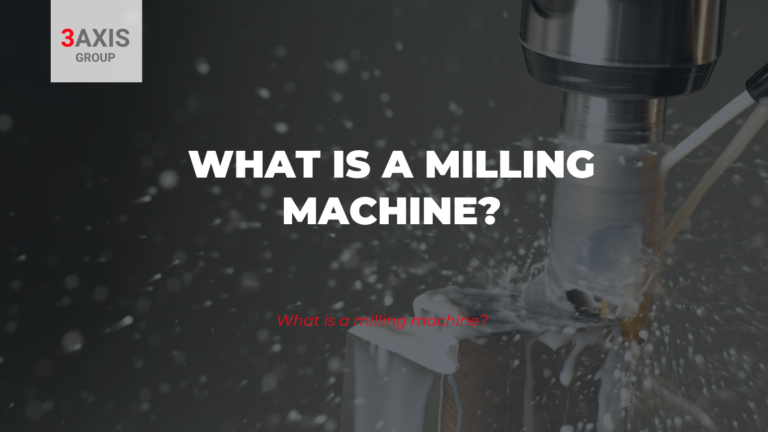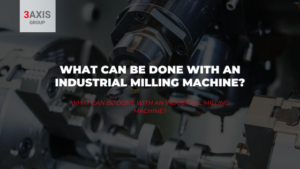Undoubtedly, the goal of modern CNC milling is to transform materials such as metal castings into finished, usable parts. That goal is only possible by using incredibly precise CNC milling machines. Discover What is a milling machine and what is it used for.
But what is a CNC milling machine and what does a milling machine do? If you have these doubts you can’t miss today’s post. In addition, for the curious ones, we will also talk a little bit about the origin of the milling machine. Don’t miss it!
What is a milling machine and what is it used for?
To answer the question of what is a milling machine used for we will explain what the milling process consists of. Milling is the machining process in which the removal of metal takes place due to the cutting action of a rotating milling cutter.
The milling machine is a widely used machine in many industries because of the high metal removal rate, good accuracy, and better surface finish. Therefore, a milling machine finds a wide application in production work.
Milling machines are in general used to produced slots or grooves in workpieces. Also, industries usually use it to produce complex shapes. But we shouldn’t forget that there is one key aspect that will determine the complexity of the parts that can be made with the milling machine.
The range of motion is the key aspect of CNC milling, and it determines what can be accomplished by the mill’s tooling. In CNC milling machines, that includes 2, 3, 4 and full 5-axis options.
CNC Milling machines can be programmed to perform complex processes like cutting intricate medical machine parts with very little human interference. All parts will be uniform, meaning a consistent batch of products and few mistakes for commercial or industrial businesses to pay for.
History of a milling machine
Milling machines have been always influential in the world of production and manufacturing. Without them, many of the innovations that have emerged throughout history would not have seen the light of day.
Milling machines were originally developed to speed up hand-filing. They first appeared in the early 1800s. The 1840s – 1860s brought the creation of a few popular designs, many of which were geared towards production. They still didn’t have the classic three axes of movement we know today, but were more like a drill press, often setup in a line where each machine performed a single operation.
With the rise of automation from the 1940s onwards, the next step was bringing milling machines to the future. Manual usage may have given workers a chance to be more precise, but it was dangerous and known to be deadly.
Preprogrammed machines were safer. So, during the 1950s, NC finally moved from the laboratory into the machine shop, with machinists using punched tape to direct the milling machine’s movements. Initially, NC machining was used only in aerospace applications, where recreating complex airfoil and wing profiles proved difficult to do reliably.
It caught on slowly elsewhere but accelerated into full CNC (Computer Numerical Control) in the 60s and 70s when data storage and input methods improved.
Since then, the technology behind data storage, computing and machine tools has constantly improved, so we’re now able to have CNC machines at our desk or use them to create giant, complex parts out of many materials.
As you can see, there are many advantages of having a CNC milling machine in your workshop. Visiting our Marketplace you can find the one that best suits your business. And if you have any questions, you can contact us, we will be happy to help you!
Discover also:
>> What´s the difference between 3 Axis, 4 Axis & 5 Axis Milling?




